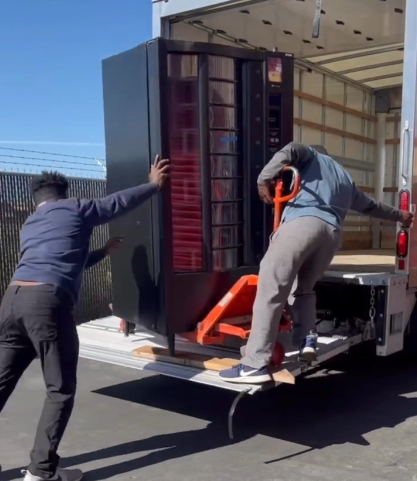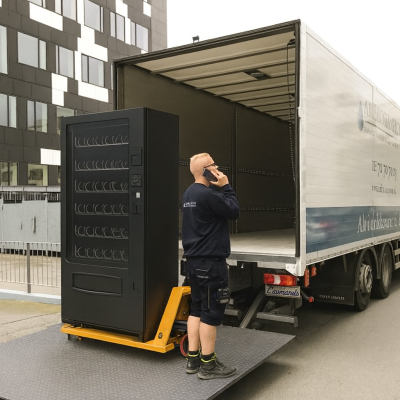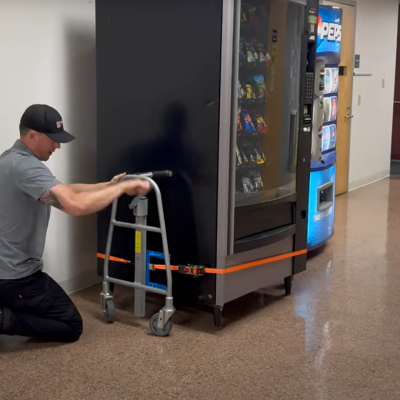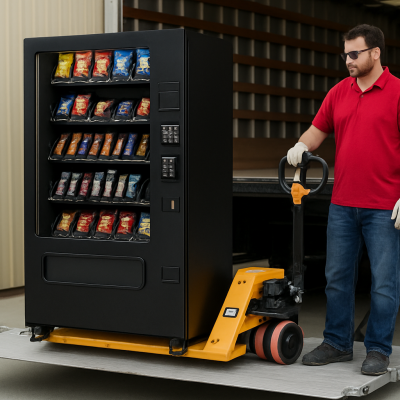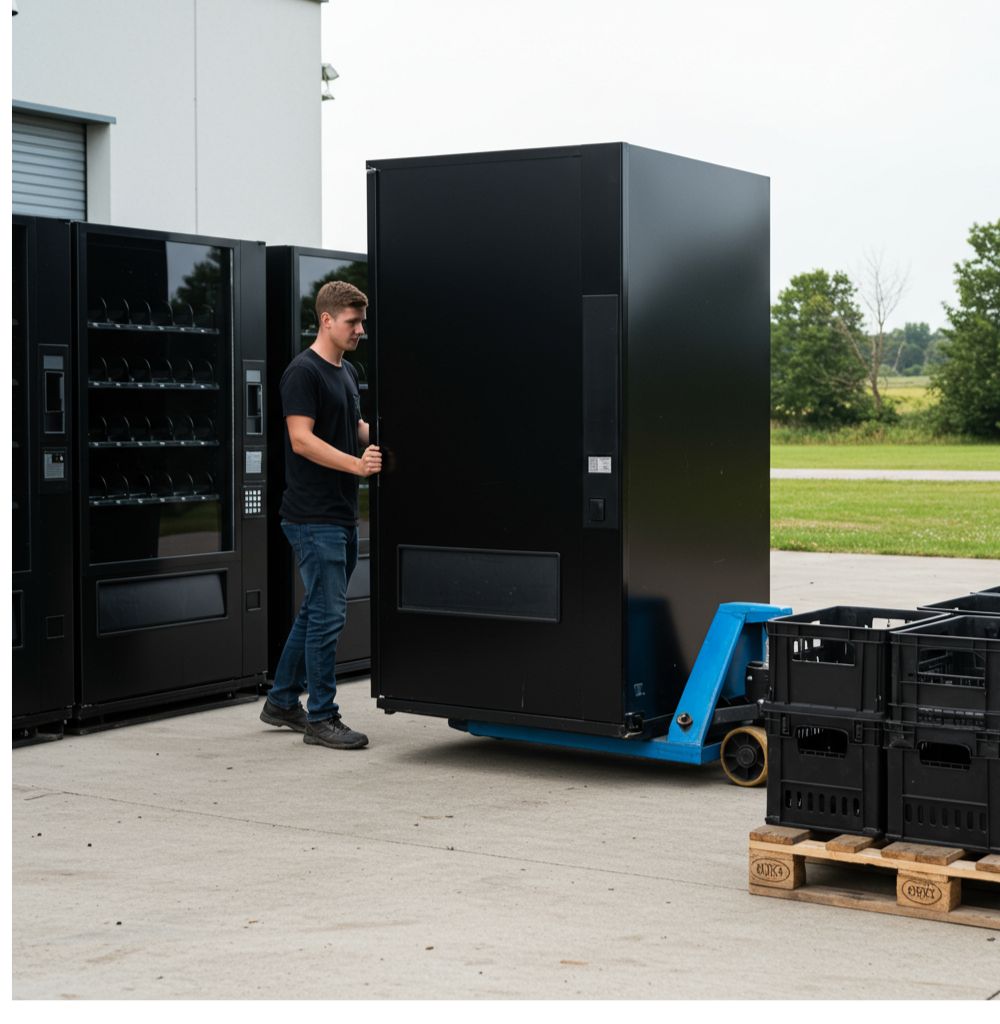Moving a vending machine looks simple until you’re staring at 800+ pounds of steel, glass, and refrigeration on a tight deadline with a 2-inch door threshold and a ramp that feels steeper in person. In Dallas–Fort Worth, we see it all: high-rise freight elevators downtown, no-dock warehouses in Arlington, long hallways in Plano, and tight break rooms in Denton. Here’s a practical, human guide to doing it safely and efficiently, with real-world tips from Reddit. These two quotes sum up 90% of the job. The right equipment trims crew size and risk. The wrong equipment adds time, cost, and danger.
“One guy can do it if he knows what he’s doing, has a lift gate, a pallet jack or two…”
“Definitely need at least 3 people if you don’t have a lift gate.
Lift-gate truck (2,500–3,000 lb):
Essential if there’s no dock. It’s the #1 safety multiplier for loading/unloading.
Electric pallet jack:
Smoother starts/stops, better control on slight slopes, far less strain than a manual jack.
Manual pallet jack(s):
Still useful for tight turns indoors; sometimes you’ll stage with one and steer with another.
Protective padding & moving blankets:
Wrap the machine to prevent cabinet scratches and glass scuffs.
Heavy-duty ratchet straps & edge protectors:
Lock it to the wall of the truck and protect painted corners.
Threshold/ramp plates:
Bridge door lips and keep wheels from getting stuck (or chipping tile).
Floor protection (Masonite/ram board):
Saves hardwood, tile, and carpet—and your relationship with the facility manager.
Work gloves, pry bar, wheel chocks, and a spotter’s whistle/hand signals:
Small items, big safety impact.
Prep: What to Do Before You Move
Empty the machine. Remove product, coins, and cash. Less weight = less risk.
Power down and prep. Unplug snack machines. For coolers, keep upright; if it was ever laid on its side, let it sit upright for several hours before powering back on.
Secure moving parts. Lock doors, tape the coin return, secure trays/shelves if needed.
Measure everything. Door widths, hallway turns, elevator cab depth/height, loading dock clearance.
Plan the path. Reserve the freight elevator, clear obstacles, lay floor protection and threshold plates.
Communicate the plan. Assign roles: lead operator, spotter(s), truck lead. Review hand signals and “stop” words.
Move Day: Step-by-Step
Wrap & strap. Pad the cabinet and strap doors shut.
Lift carefully. Use a pry bar to get the pallet jack’s wheels under without slamming. Keep the machine centered on the forks.
Slow is smooth. On ramps and thresholds, one person drives, one spotter watches wheels, another watches clearances.
Use the lift gate correctly. Chock wheels, center the weight, keep people off the platform when it raises/lowers.
Inside the building. Protect floors, go straight lines when possible, and take wide, deliberate turns.
Set in place. Level the machine with its feet to prevent rocking and vending errors.
Power up (for coolers) only after it’s been upright and settled in—follow the manufacturer’s recommended wait time.
When One Pro Can Do It vs. When You Need a Crew
Solo (experienced): Ground-level pickup and delivery, clear path, lift-gate truck and electric pallet jack on site.
Two to three people: No lift gate, tight turns, small ramps, or older floors that need extra protection.
Three+ people: Stairs (specialized equipment required), steep ramps, or long interior pushes with multiple thresholds.

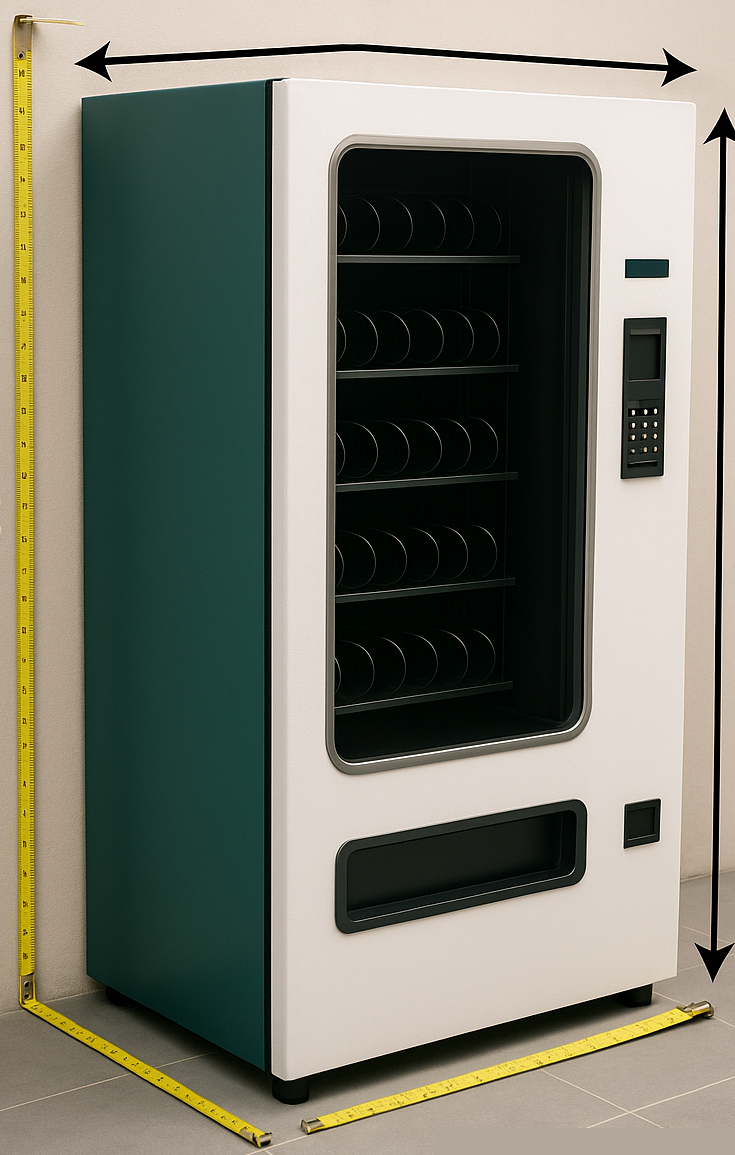

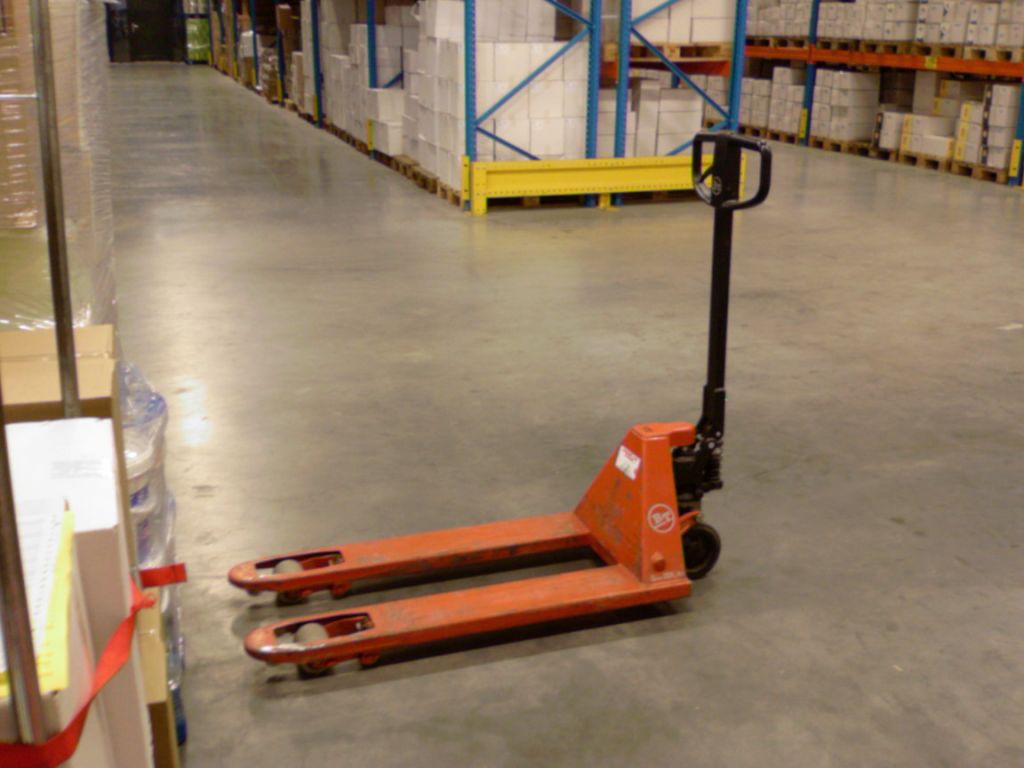
DIY or Hire It Out?
If you have a lift-gate truck, electric pallet jack, protective padding, and a trained operator, a single pro can handle many straight-shot, ground-level moves. If you don’t have that gear—or if you’re facing stairs, steep ramps, or delicate floors—bring in a professional crew. It’s cheaper than a damaged machine, an injured back, or a lobby floor repair.
Need It Done Safely?
We’re fully licensed and insured, equipped with electric pallet jacks, lift-gate trucks, and full protective gear, and we work around your building’s schedule. Call 469-881-9286 or message us to book your DFW vending machine move.


